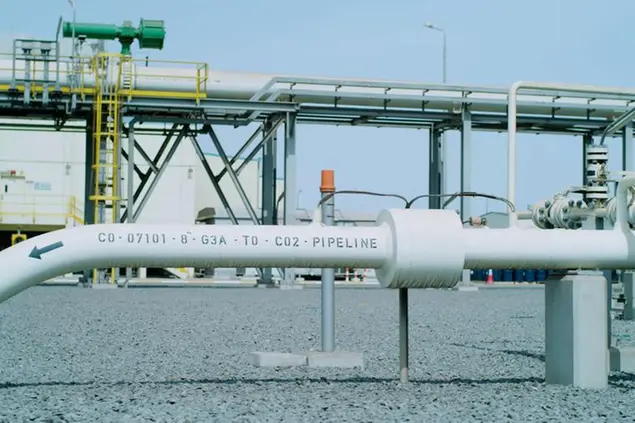PHOTO
Escalating climate risks mean the world must build a new energy system in record-fast time. Figuring out how to scale up carbon, capture and storage (CCS) is a major part of the biggest positive disruption across energy markets in more than a century – both in the UAE and abroad. However, there is still a long way to go.
With just a few weeks until the doors open for COP28 in Dubai this November, all eyes are seeking progress points. The growth potential for CCS in the UAE and the broader Middle East – home to global energy leaders and a portfolio of diverse industrial sectors – represents a major and largely untapped springboard to support Net Zero targets.
The capacity for CCS in the UAE alone needs to swell by 30x in order to hit the country’s Net Zero goal by 2050, said the UAE’s Climate Envoy and President-Designate of the UN Cop 28 climate summit, Dr. Sultan al-Jaber. This challenge comes amidst a broader backdrop of being both an environmental pioneer and the third largest oil producer within OPEC. So far, the second largest economy in the Arab world is mastering this dynamic dual act.
For example, ADNOC and the Abu Dhabi clean energy company Masdar had a joint venture to create Al Reyadah, the world's first commercial-scale CCUS [Carbon Capture, Utilisation and Storage] project, in 2016. Plus, the Global CCS Institute, an international think tank, opened its first Middle East headquarters in Masdar City in Abu Dhabi last August.
Making our mark
With our sights set on SNOC achieving Net Zero in its operations by 2032, we signed a memorandum of understanding with Sumitomo Corporation in July this year, through its wholly owned subsidiary Sumitomo Corporation Middle East FZE. Together, we will conduct a joint feasibility study related to the potential for CCS in Sharjah and beyond – just one of the many “green” roads we are exploring.
Our mature gas field is potentially a competitive carbon sink for sequestration due to its large storage capacity. It is also in a strong location as it is close to multiple large-scale CO2 sources, such as power plants and other industrial emitters. This deal forms part of our effort to repurpose our mature gas reservoirs in Sharjah, one of the Emirate’s economic drivers.
Two words
Speed and scalability are urgently needed to reach the full potential of CCS in time for Net Zero. Momentum is certainly picking up, though we must remember that such growth is from a relatively low base. The number of CCS facilities under development worldwide has grown by 44 percent year-on-year to 244 million tonnes per annum from 2021-2022, according to the Global CCS Institute. This translates into 196 projects in the CCS facilities pipeline, with 30 percent of this total added last year alone.
These numbers may not seem very high considering the challenges ahead, until one considers that there are currently only 30 CCS facilities in operation worldwide. Suddenly, nearly 200 projects in the pipeline speaks volumes about the surge in appetite, confidence and funding availability for CCS in the Middle East and internationally.
The full picture
Getting CCS projects up and running is no small feat. It involves expert management across the whole CCS value chain, including gas management, subsurface capability and know-how relating to the mature gas fields. Techno-economic analysis of CO2 capture, transport, storage and assessments of regulatory aspects in order to assess the viability of a small to large-scale CCS project are also key.
Let us not forget the project and market development, which are increasingly complex amid the heightened need for energy efficiency and sustainable operations. Plus, there needs to be a holistic understanding, over the long-term, of the whole project’s carbon footprint, incorporating Scope 1, 2 and 3 and considering how this feeds into carbon markets and supporting the fast-evolving world of ESG. It is a multifaceted picture.
These steps, plus many others, highlight why collaborations to enable CCS to thrive are so deeply important. CCS is not a silver bullet to Net Zero, but equally, we probably will not reach this mightiest of global goals without it. The International Renewable Energy Agency (IRENA) recently said that the level of investment needed for carbon removal and infrastructure could reach far more than $100 billion in order to meet a 1.5°C scenario by 2050. Clearly, this cannot be achieved in siloes. More than ever, be it within national borders or beyond, we must work together.
(The author is CEO of UAE-based Sharjah National Oil Corporation (SNOC). The government-owned company serves as the oil and gas industry executive arm of the Emirate of Sharjah, under the auspices of the Petroleum Council of Sharjah.)
(Any opinions expressed in this article are the author’s own)
Subscribe to our Projects' PULSE newsletter that brings you trustworthy news, updates and insights on project activities, developments, and partnerships across sectors in the Middle East and Africa.
